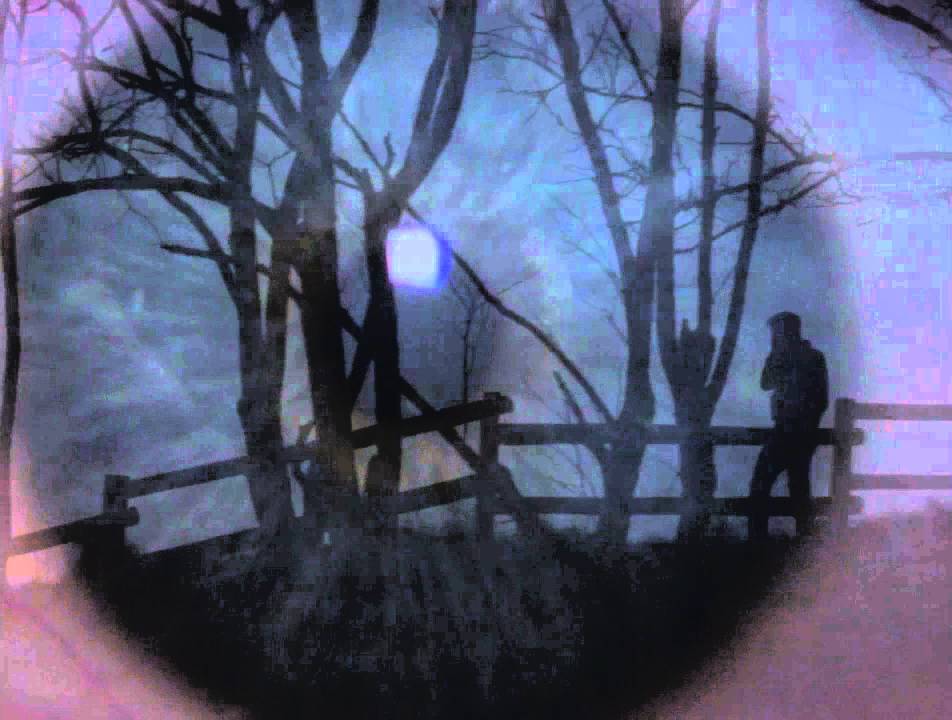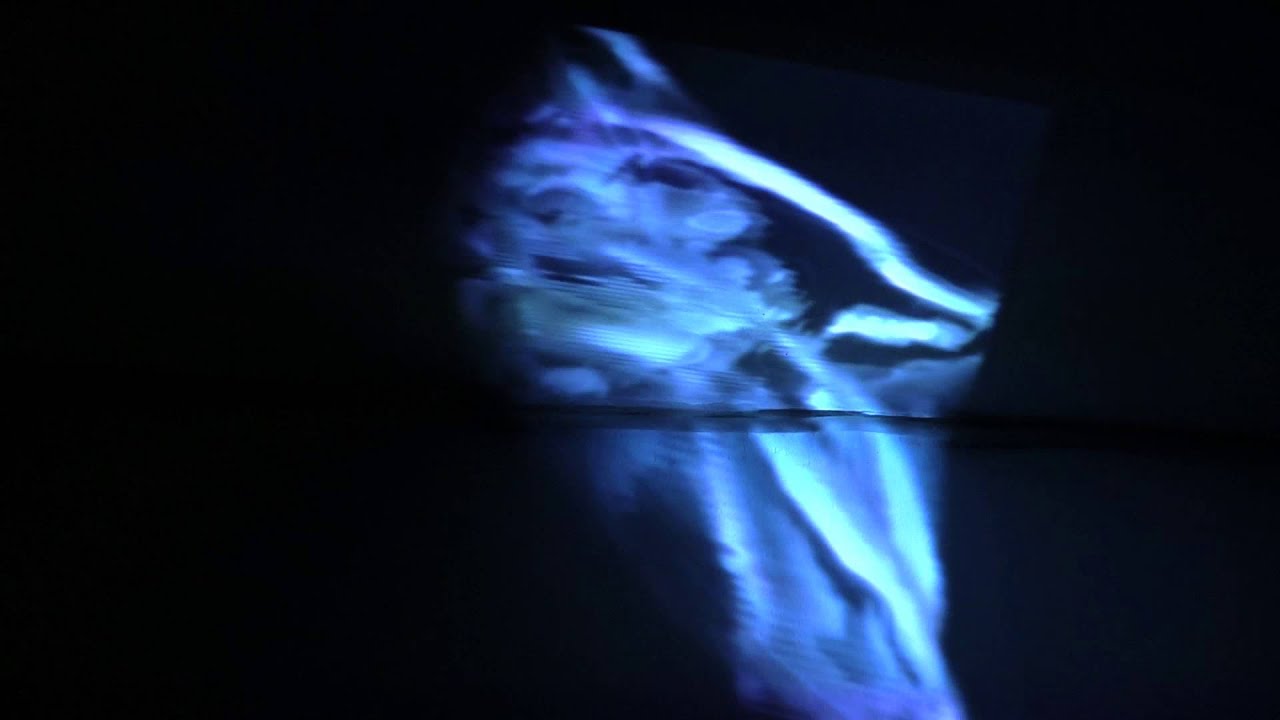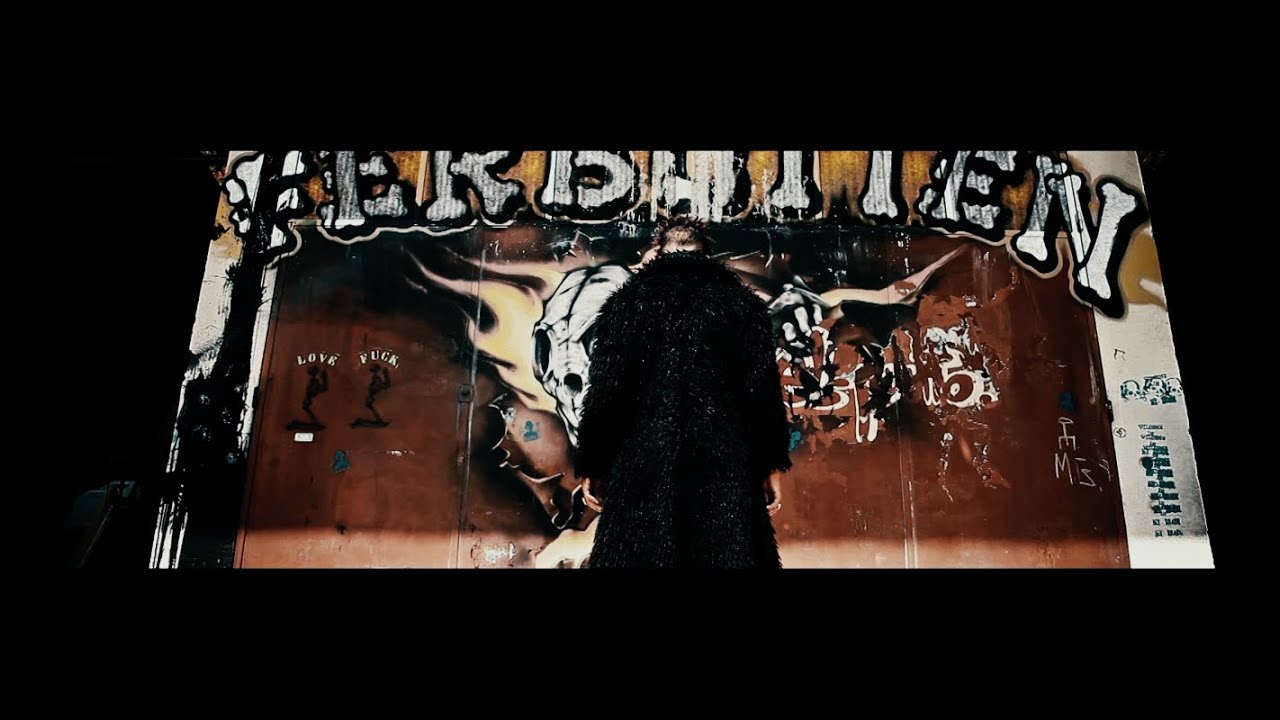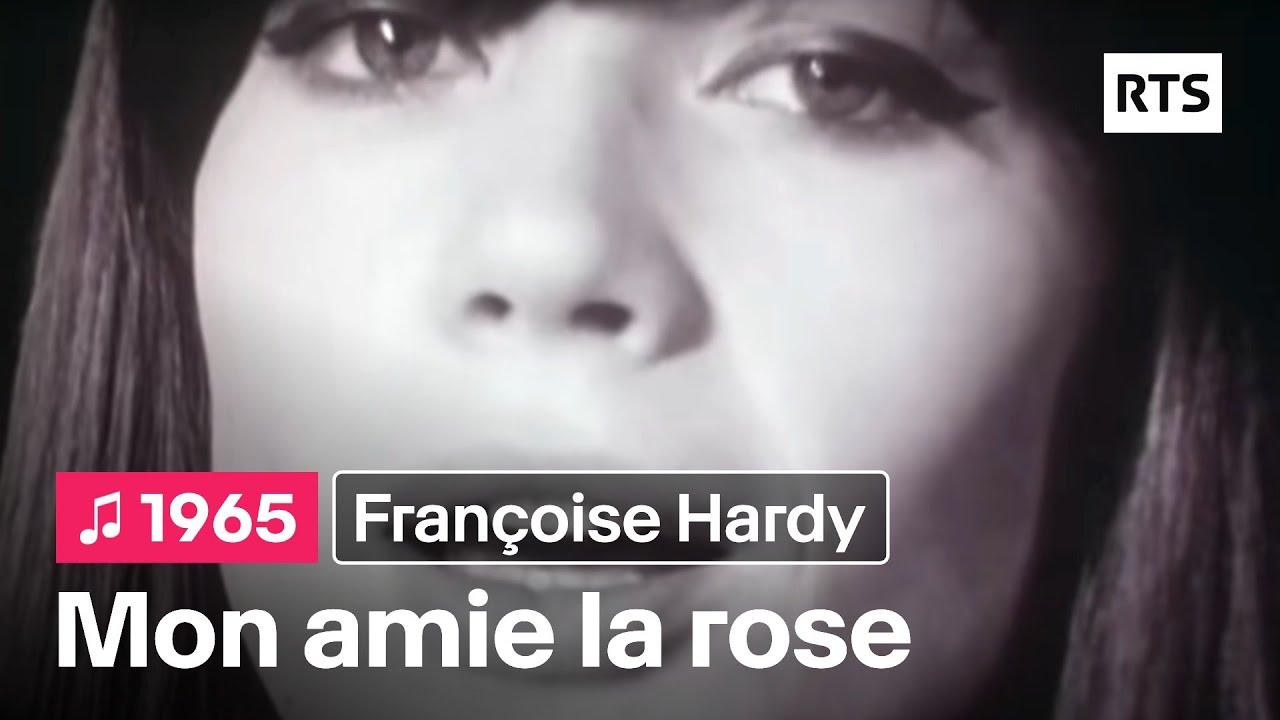In the space of four years, In Paradisum – the label run by Paul Régimbeau (aka Mondkopf) and Guillaume Heuguet – has set a benchmark for quality with its small but judiciously assembled (perhaps sculpted is more apt) catalogue. A cursory appraisal could also leave you with a sense of grinding, pounding, pummelling uniformity, but that’s really only part of the picture, and I say this as someone rather thrilled by the grindcore-inspired Régimbeau project Extreme Precautions. For example, last year’s Wasted House EP by Roger West (real name Amédée De Murcia, also behind Somaticae and Insiden) was a delightfully bleached recollection, and dilapidated reconfiguration, of 90s dance music, and despite being an ostensibly ‘industrial’ project, the label’s new IXP series lets a little more light in, particularly via In Paradisum newcomers Mätisse.
As it turns out, Guillaume Heuguet has quite a lot to say about industrial music and what it means in France. The first three IXP releases, from Mätisse, Somaticae and constantly mutating bass collective Sleaze Art are illustrated by photos of the remnants of monorails built to trial the Aérotrain, a ‘hovertrain’ project that came to halt in 1977, never to be realised.
“For this series, I went to take photos of the Aérotrain with my friend Louis Canadas. The imagery of English and German industrial music bores me. It’s all pretty uniform and it doesn’t correspond to my culture or that of musicians I work with. Even if some live in Paris these days, a number of them grew up in suburbs and ‘periurban’ spaces, between the city and the countryside, which don’t necessarily resemble the ruins or apartment blocks in other countries. I felt it was important to have these images because sometimes it feels like electronic music is the global language of modernity whereas it actually relates to very particular contexts.”
The thinking is scenic, both in terms of landscape and of the relatively tight-knit nature of the musicians’ musical networks. Although the sonic spectrum is different, this appeal to localism (national, regional and closer in) has parallels with La Souterraine’s project – not so much as a way of closing off from wider dialogue but actually as a route to communicating more authentically, avoiding the temptation to say only what it is imagined the other wants to hear.
“The musicians I work with are very involved in local scenes in Paris, Toulouse and Lyon, collaborating at a local level: Sleaze Art is a group whose line-up regularly changes, featuring different people from the noise community in Paris. Somaticae live in a house full of musicians in Lyon, Mätisse are musicians from Toulouse who see each other every day and are always working on new projects.
For them, recording music it also giving an account of a meeting, a desire, of a moment in their lives, something urgent but very natural at the same time. These recordings all have something of capturing a moment about them, whether it’s the acoustics of a particular room for Mätisse, the fragility of improvisation in the case of Somaticae, and the necessity of executing a flawless performance for Sleaze Art.”
Mätisse’s two long and beatless pieces sound as though they’re constructed from edited highlights of improvisation sessions. The room ambiance means that even though things take a turn for the shadier on second track ‘Polemos’, the result is still a beautifully soft-textured sound. Consequently the photo accompanying their IXP release is a section of Aérotrain track half reclaimed by trees and ivy. Sleaze Art, on this occasion a trio led by founder Kasper T Toeplitz, generate sound using bass guitars fed through a variety of effects, contribute the monumental noise-out ‘Infra-blast’, which begins ominously with what sounds like a helicopter hovering beneath grey cloud cover. Their picture is correspondingly more spartan. The first track on Somaticae release, meanwhile, is a thick, gloopy stream of noise that seems to be excitedly trying to head in hundreds of directions at one, but after that the tone is more reflective, even mournful. Here, the T-shape monorail is captured with a cemetery alongside it; the sequence of tracks speak of initial technological excitement giving way to an elegiac mood.
“The electromagnetic train, it’s a kind of visual shortcut for different ideas important to us,” says Heuguet.
Is there just same plain nostalgia here, I wonder?
“First it’s the idea of experimentation. Trying out new technologies and new aesthetics is always worthy even if it seems to fail, to have no lasting influence. Somaticae’s first record on the label was to us an effort to get back to Errorsmith’s lost path with Near Disco Dawn and see where it could go. Maybe some day someone will use part of the technologies developed for the magnetic train and use it in some kind of new and influential way. The train now exists as a lost path in the history of engineering, yet the photographs show that it continues to exist as an environment.
I say even when it seems to fail because even in musical innovation there is a pressure on efficiency and results. Especially if something doesn’t fit in a specific scene, it’s difficult for a label to take the risk to press the record. I think the Mätisse record for example really exists in its own world – it’s not your regular record for lovers of neo-classical, or dark ambient… it’s something else. We like the idea that the label can be this outlet that helps get an experiment out even if we don’t really know what it’s about and maybe we will only realise later what it means. In this sense experimentation is different to innovation which brings clear and quick results. That’s why we needed to make a different series from the main output of the label, where the records have more direct effect on us.”
It also relates to Heuguet’s notion of what might constitute a particularly French form of industrial music.
“We are very much inspired by the industrial music of the 80s but we wanted to escape the clichés of brutalist, black-and-white, grainy pictures on metallic sounding, lo-fi music, and referencing urban life. The Throbbing Gristle records were more about creative freedom than a specific sound design. And of course the cover of 20 Jazz Funk Greats with the band on a cliff top is so good. Actually the French free rock underground of the 70s had a lot to do with extra-urban zones as well…
These photographs show these zones where it’s in-between, not in Paris or in French main cities but in suburbs were you quickly get from gloomy grey concrete buildings to wasteland (terrains vagues – vague terrains – in French) full of dirty grass. Music doesn’t come out of nowhere and it’s exaggerating things to say that it will always travel everywhere. Thanks God not every kind of electronic music is an ‘international style’ music meant to function in the same way everywhere.
We release these records – part of them very much linked to the idea of magnetic energy, like Electricité [Somaticae’s release], some other more reminiscent of natural climates like Mätisse’s Kairos – because we’ve been playing as children in landscapes that have been shaped by the industrial revolution as much as farming. And even if we live in Paris right now, we like both, we’re always escaping to the countryside and back, so we want to release music that’s organic and music that’s electric or electronic. We feel we don’t have to choose and think the records we like somehow reflect that ambivalence… between making urban electronic noise or escapist, spacious, airy music.”
There’s more exploration to be done in this ‘vague terrain’ even though Heuguet thinks they’ll be “at a more erratic rate from now on.”
“Actually I already have a fourth photograph from the series which is waiting for the right music.”
Rockfort also recommends
KillASon – The Rize
It’s been a source of frustration that I haven’t really connected with much that’s been going on French rap in recent years. This is partly down to my failure to look in the right places, as well as an aversion to the country’s current crop of mainstream artists, but there were times when I was all ears – not just the 90s heyday but also a second golden age just after the turn of the millennium, when the first, and arguably best, albums from La Caution (2001), La Rumeur and TTC (both 2002) appeared.
More recently, though, Dandyguel and younger crews likes LSPC have reignited some interest. Then there’s the curious case of KillASon, a hip hop dancer who released The Rize as a mixtape last year and is delivering it now in expanded form via the Fin De Siècle label. From this remove he seems to have very little to do with any prevailing trends in French rap, underground or otherwise. That’s not just because he chooses to rap in English, but also in terms of the production, courtesy of a certain Maki La Machete – who would seem to be none other than KillASon’s alter-ego.
Alongside referencing terrorist atrocities and the refugee crisis, KillASon finds space on ‘Ready Or Not’(nothing to do with either The Delfonics or The Fugees) he finds space for a line about, “Energy from the 90s but lyrics from the future.” Musically there are 90s references here, traces of OutKast (particularly on the love-lorn ‘The Mind’s Eye’) and rave-age bass and synth-washes on ‘Wonder’, but well-integrated with more recent trap-ings. ‘Hoddest In My Town’ also showcases an unusual, dry-mouthed delivery and self-deprecating humour – if the boast seems comically provincial (just one step shy of ‘Hoddest In My Village’), it’s acknowledged by the whispered retort “but it’s not difficult though.”
The most encouraging factor is that the two bonus tracks here are anything but filler – the aforementioned ‘Ready Or Not’ and the breathlessly exciting ‘Black Crook’ are the probably the best things on it. KillASon is indeed ready to rize.
Françoise Hardy – Tous Les Garçons Et Les Filles/Le Premier Bonheur Du Jour/Mon Amie La Rose/L’Amitié/La Maison Ou J’ai Grandi
Disclosure: I was the interpreter for the interview conducted with Hardy by Kieron Tyler for the sleevenotes to this reissue series of her first five albums, and I consequently get a ‘special thanks’ in the credits for all of them. Given that Hardy was one of my first French loves (possibly the first actually), I obviously have an extra reason for being thrilled with these releases. Regardless, these albums – which were all eponymous on their initial release, their titles coming from the song each is most associated with – are never less than charming, and often exquisite.
Hardy was a trailblazer, the first of her generation to write her own material, frequently in collaboration with producers and musicians from both side of the channel. She was also a reluctant style icon and a muse not only to Dylan but also the French songwriters who were inspired to pen classics like ‘Mon Amie La Rose’ and ‘Le Premier Bonheur du Jour’ for her, tapping into the potent seam of ‘spleen’ she had isolated in the midst of the new adolescent pop sounds. It was a new teen vocabulary for far older concerns: Baudelaire’s poem ‘Spleen’ begins “I am like the king of a rainy land/ Wealthy but powerless, both young and very old”; as I’ve previously pointed out, Hardy was singing ‘Ma Jeunesse Fout l’Camp’ (‘My Youth Is Disappearing’) at the age of 23. ‘Mon Amie La Rose’, by Cécile Caulier and Jacques Lacome, also meditates on the passing of beauty, youth, life.
The long-players were largely assembled, as Tyler points out, from EP releases known in France as ‘Super 45s’. Tous Les Garçons Et Les Filles, the debut, is the most minimalistic, all tiny, tinny guitars, occasionally a little surf-y, Hardy’s voice dipped in a well of reverb. It’s the sound of being stuck in an out-of-season beach resort.
L’Amitié wins for quality and variety, featuring not only the crystalline, arpeggio-heavy ballads that perhaps constitute the definitive Hardy sound, but also more upbeat folk-pop, stomping ballads and fuzzy beat pop like ‘Tout Ce Qu’on Dit’. La Maison Ou J’ai Grandi is the most consistent in its melancholy tone, perhaps overly so, but still includes the lacerating ‘Si C’est Ça’ (a Hardy original, just voice and guitar) and a diaphanous take on Italian singer Mina’s hit ‘Se Telefonando’, which becomes ‘Je Changerais D’Avis’.
Hardy’s orchestral pop peak, Comment Te Dire Adieu, as well as her outright masterpiece La Question, were still to come but these five albums are all feature their fair share of unexpected musical notions and ripples of sweet pain.






